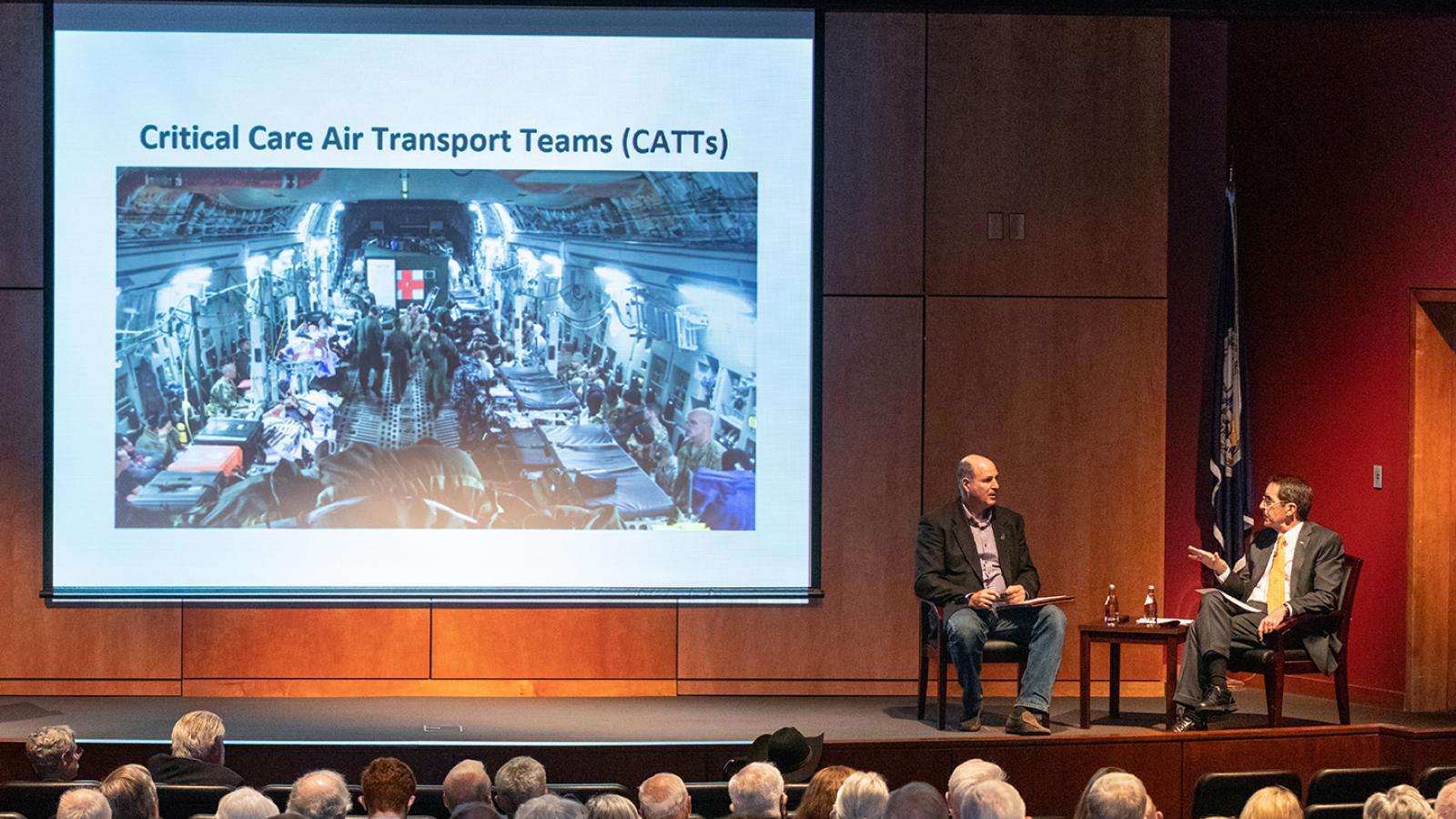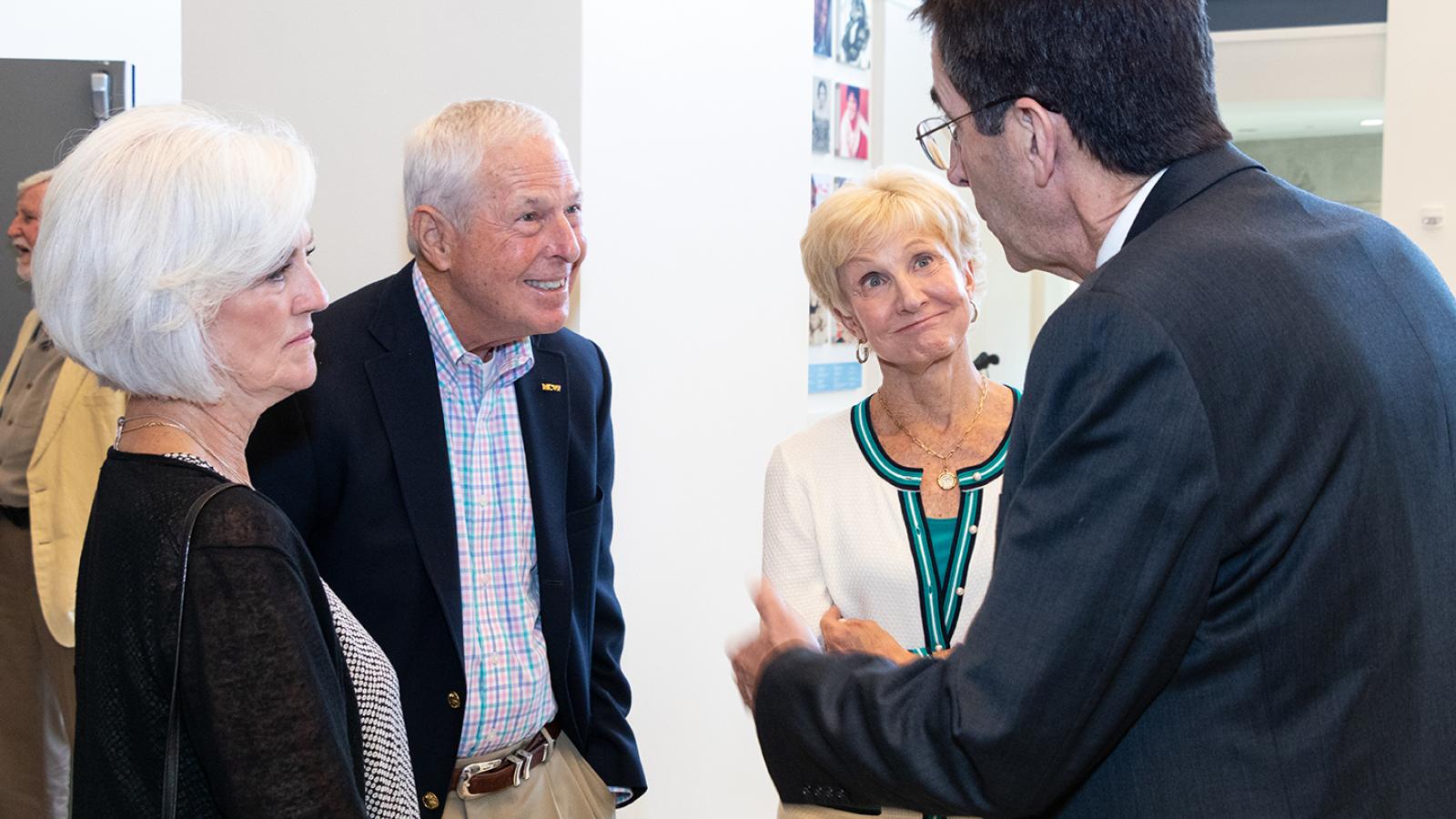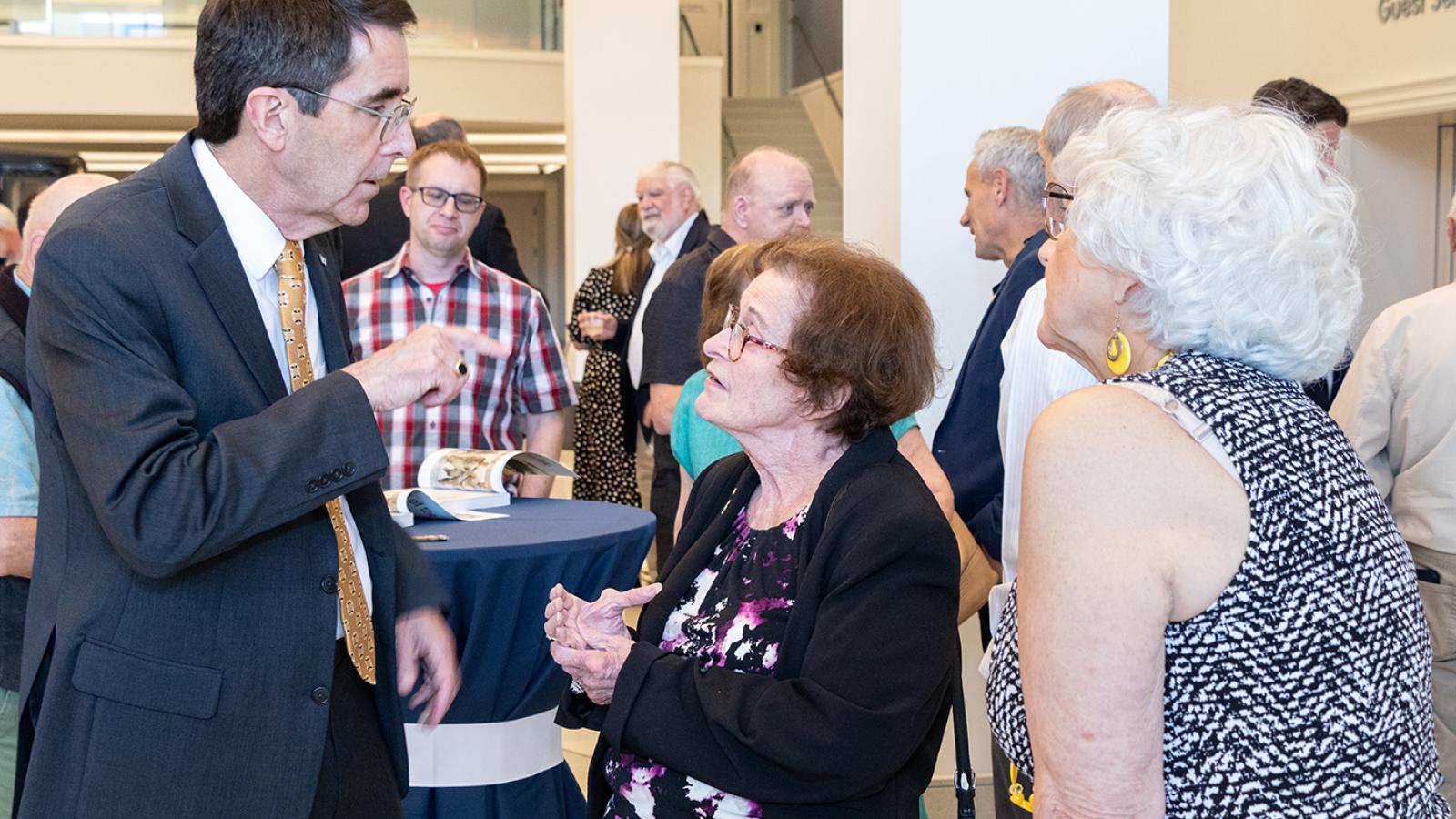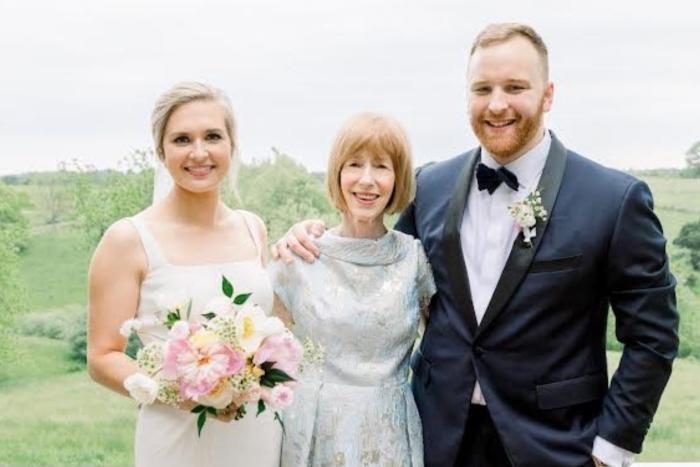
The foundation co-hosted its fourth Health in History event with the Virginia Museum of History & Culture on June 9. “Out of the Crucible” featured a discussion about how the U.S. transformed combat care during the wars in Iraq and Afghanistan. The featured speaker was Art Kellermann, M.D., M.P.H., senior vice president for VCU Health Sciences and CEO of VCU Health System, who edited a scholarly textbook on the topic and spoke to how medical innovations in combat have changed the way medicine is practiced off the battlefield. Photos: CSI Studios

New York Times bestselling author David L. Robbins moderated the discussion with Dr. Kellermann on combat care innovations.

Dr. Kellermann discussed critical air transport teams, an innovative approach to critical care that has saved lives both abroad and at home.

During the reception, Dr. Kellermann discussed the event with attendees including Gail Johnson and Bob and Louise Canfield, and signed copies of the book he co-edited.

Charlie Bryan, Ph.D., current foundation trustee and former president of the Virginia Historical Society and wife Cammy Bryan with Cathy Boe and Jim Dill from the Virginia Museum of History & Culture.

Dr. Kellermann discussed the event with attendees including Becky Perdue, lifetime honorary trustee of the foundation.

An attendee has her copy of the book signed by Dr. Kellermann at the reception following the event.
Health in History: How Combat Care Inspired Innovations off the Battlefield

From smallpox inoculation of troops during the American Revolution to medical helicopters in Vietnam, medical innovations born on the battlefield have often reshaped the way health care is provided every day.
Many such advances resulted from Operation Enduring Freedom and Operation Iraqi Freedom. During this period, the approach to casualty care transformed at a remarkable pace and was the topic of discussion in the fourth installment of the Health in History series co-hosted by the Foundation and the Virginia Museum of History & Culture.
Guest speaker Art Kellermann, M.D., senior vice president for VCU health sciences and CEO of VCU Health System, discussed the book he co-edited, Out of the Crucible: How the U.S. Military Transformed Combat Casualty Care in Iraq and Afghanistan. David L. Robbins, a New York Times bestselling author, moderated the conversation, which took place at the newly renovated Virginia Museum of History & Culture and was made possible by a grant from the Virginia Sargeant Reynolds Foundation.
The early summer evening session was riveting and introduced the audience to a new perspective to the aftermaths of war in the medical field. Dr. Kellermann shared four life-saving innovations that have come out of battlefield medicine and are now used regularly in today’s hospitals: modern tourniquets, two of which every service member now carries; topical bleeding control technology that was developed at VCU; forward surgical teams; and critical care air transport teams.
Thousands of service members who would have died in earlier wars are alive today thanks to these innovations. And tens of thousands more with severe injuries were able to recover substantial function and lead fulfilling lives.
Among the event attendees was veteran Phillip Trezza, a former U.S. Army medic. Trezza said he has followed Dr. Kellermann’s work for years but had his first opportunity to meet Dr. Kellermann at this program open to the community.

(Title: "Frontline Medicine Boots" 2020; Artist: Elizabeth N. Weissbrod, MA, CMI)
“It was a great honor,” Trezza said. “Having been in the field and living through it, this event was right up my alley, and everything Dr. Kellermann said resonated.”
The partnership between the foundation and the museum exists thanks to Austin Brockenbrough III, a trustee of the Virginia Museum of History & Culture and a lifetime honorary trustee of the MCV Foundation.
“I am so pleased with the partnership as these two great institutions are incredibly important to our community,” Brockenbrough said. “Creating a forum to discuss the intersection of major medical milestones and historic events helps ensure the amazing legacy of the MCV Campus.”
While the future is never certain, Dr. Kellermann hopes that civilian medical practices can continue to incorporate combat medicine techniques to improve patient survival rates. With VCU as the home of one of the elite trauma centers in the nation with a hi-proficiency airborne EMS, Dr. Kellermann is optimistic that the teachings on the medical campus will also help preserve and build capabilities of future military medics.
“On the field, there are different ranks and branches of service,” Dr. Kellermann said, “but when they deploy and come together in medicine, they are one team, one fight.”



